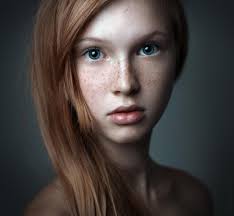portrait
英 [ˈpɔː.trət]
美 [ˈpɔːr.trɪt]
- n. 肖像;描写;半身雕塑像
- n. (Portrait)人名;(法)波特雷
使用频率:

记忆方法
1、a back formation from portraiture.
2、portraiture => portrait.
2、portraiture => portrait.
中文词源
portrait 肖像,描绘
来自中古法语portrait,肖像,描绘,来自古法语portraire,描绘,描画,-t,过去分词格,词源同portray.
英语词源
- portrait
-
portrait: [16] Portrait was borrowed from French portrait, which originated as the past participle of the verb portraire ‘depict’ (source of English portray [14]). This was descended from Latin prōtrahere, a compound verb formed from the prefix prō- ‘forth’ and trahere ‘draw’ (source of English tractor). This originally meant ‘draw out, reveal’, and also ‘lengthen’ (it has given English protract [16]), but in medieval Latin it came to be used for ‘depict’.
=> portray, protract, tractor - portrait (n.)
- 1560s, "a figure, drawn or painted," a back formation from portraiture or directly from Middle French portrait, from Old French portret (13c.), noun use of past participle of portraire "to paint, depict" (see portray). Especially of the head and face of a person.
权威例句
- 1. Today his picture goes on show at the National Portrait Gallery.
- 今天他的画作在国家肖像美术馆展出。
- 2. He gives us a portrait of the real Gandhi, warts and all.
- 他向我们描绘了真正的甘地,包括他的不足。
- 3. "Elizabeth R", a TV portrait of the Queen, had record viewing figures.
- 关于女王的电视专题片《伊丽莎白女王》创下了收视纪录。
- 4. Lucian Freud has been asked to paint a portrait of the Queen.
- 卢西恩·弗洛伊德已受邀为女王画肖像画。
- 5. Alberg took the portrait down from the wall.
- 阿尔伯格从墙上摘下那幅肖像画。